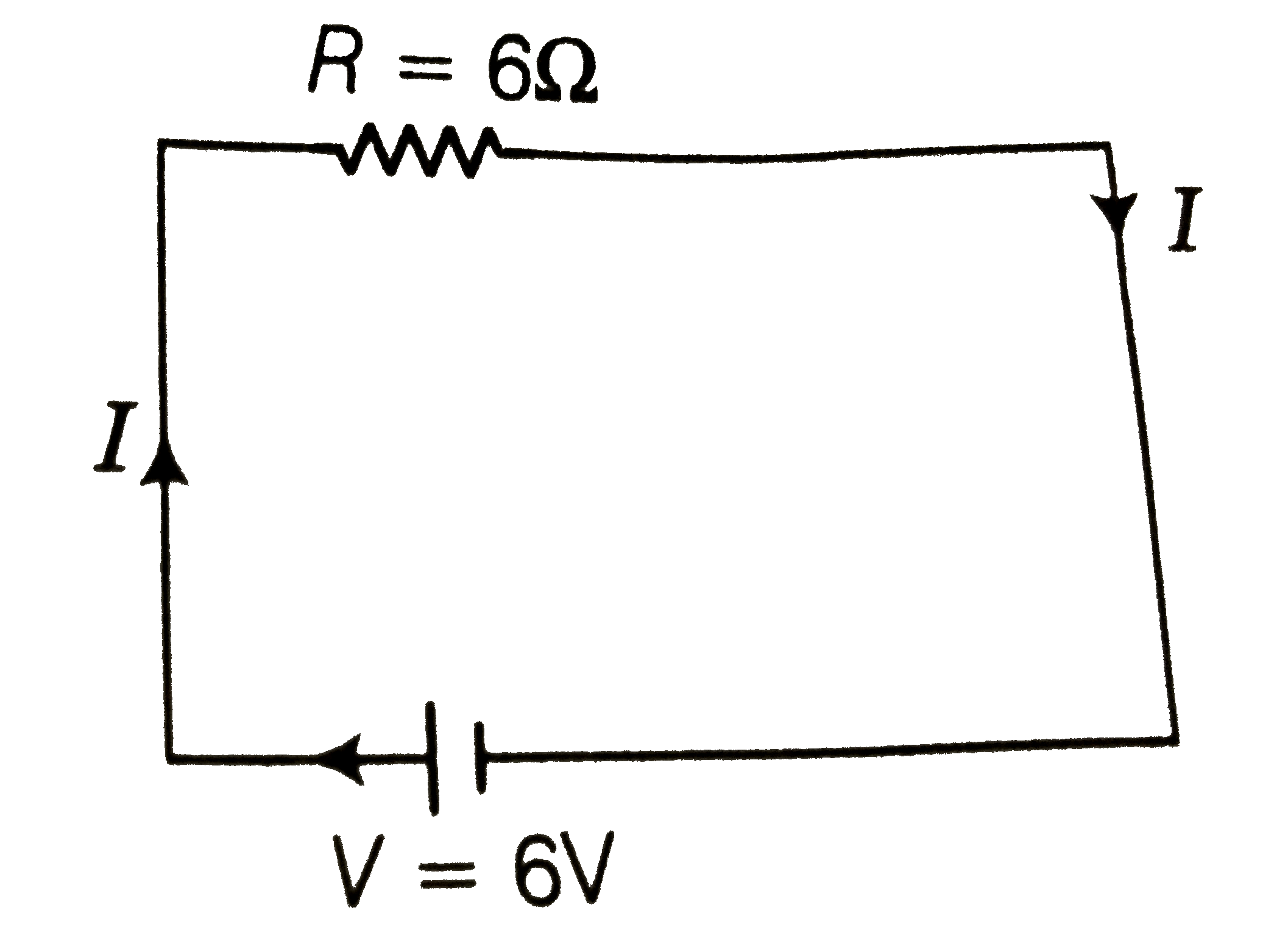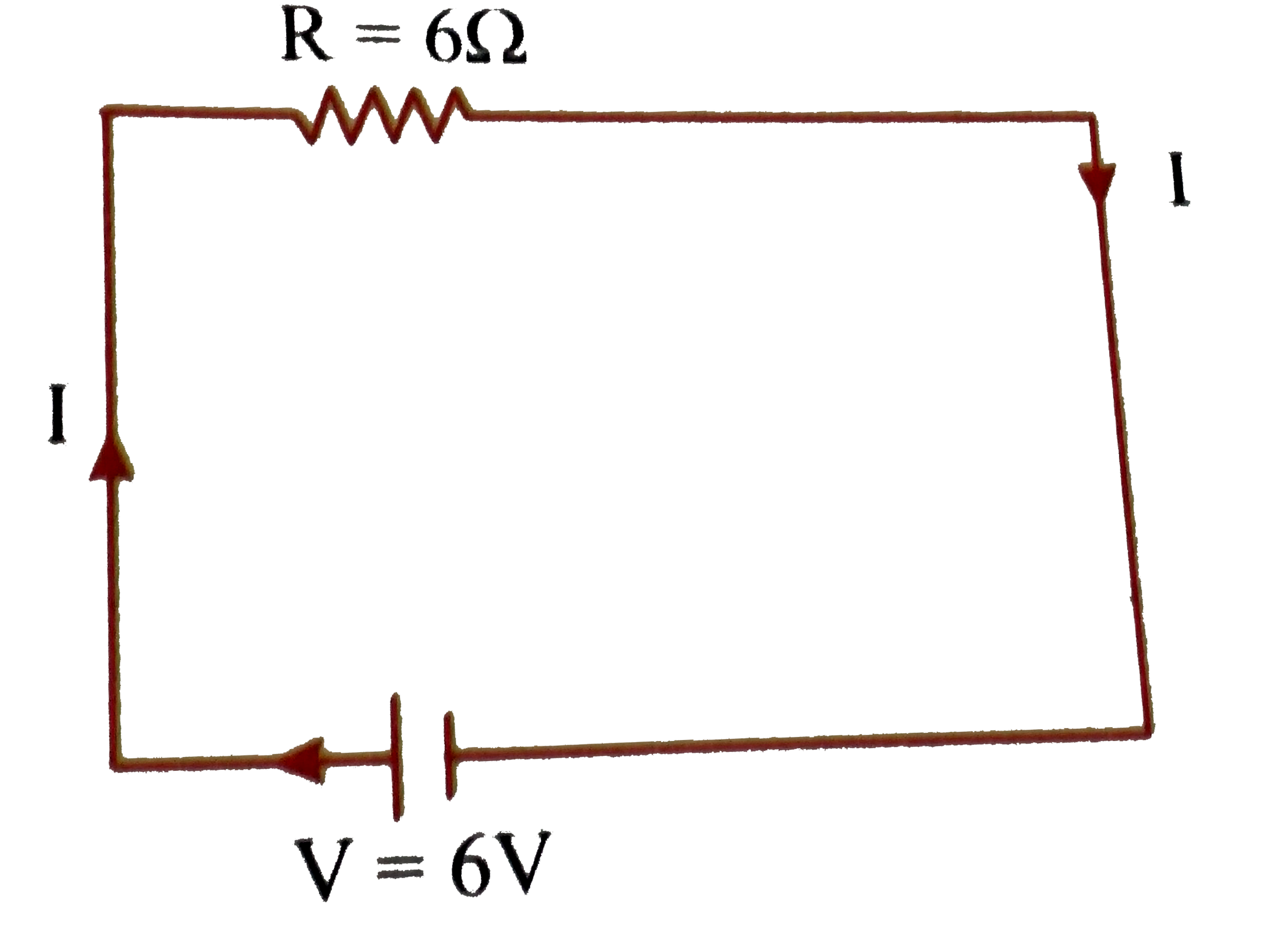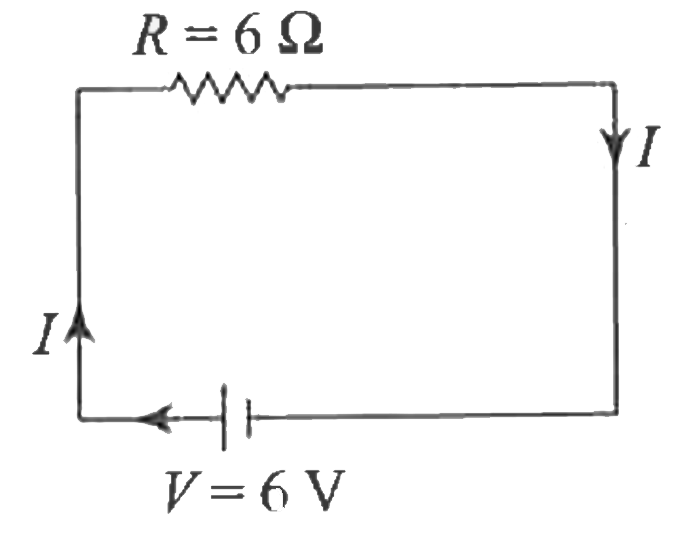
(a). Consider circuit in figure. How much energy is absorbed by electrons from the initial state of no current (ignore thermal motion) to the state of drift velocity?
(b). Electrons give up energy at the rate of RI2 per second to the thermal energy. what time scale would number associate with energy in problem (a)? n=number f electron/volume=1029/m3. Length of circuit =10cm, cross-section=A=(1mm)2.
(a). By ohm's law, current I is given by
I=6V/6Ω=1A
But, InetAvd
or vd=ineA
On substituting the values
For, n=number of electron/volume =1029/m3
Length of cirucit=10cm, cross-section =A=(1mm)2
vd=11029×1.6×10−19×10−6
=11.6×10−4m/s
Therefore, the energy absorbed int he form of KE is given by
KE=12mev2d×nAI
=12×9.1×1031×12.56×1020×108×106×101
=2×10−17J
(b). Power loss is given by P=I2R=6×12=6W=6J/s
Since, P=Et
Therefore, E=P×t
or t=EP=2×10−176=10−17s
Topper's Solved these Questions
Similar Questions

(A) Consider circuit in figure. How much energy is absorbed by electrons from the initial state of no current (Ignore thermal motion) to the state of drift velocity?
(b) electrons give up energy at the rate of RI2 per second tot he thermal energy. What time scale would number associate with energy in problem (a)? n= number of electron/volume=1029m3 length of circuit=10cm, cross-section A=(1mm)2
View Solution
(A) Consider circuit in figure. How much energy is absorbed by electrons from the initial state of no current (Ignore thermal motion) to the state of drift velocity?
(b) electrons give up energy at the rate of RI2 per second tot he thermal energy. What time scale would number associate with energy in problem (a)? n= number of electron/volume=1029m3 length of circuit=10cm, cross-section A=(1mm)2
View Solution
Knowledge Check
A conductor wire having 1029 free electrons /m3 carries a current of 20A. If the cross-section of the wire is 1mm2, then the drift velocity of electrons will be :
A6.25×10−3ms−1B1.25×10−5ms−1C1.25×10−3ms−1D1.25×10−4ms−1What is the energy in eV requried to excite the electron from n=1 to n=2 state in hydrogen atom? (n=principal quantum number)
A13.6B3.4C17D10.2The ionization energy of the ground state of hydrogen atom is 2.18×10−8J. The energy of an electron in its second orbit would be
A−1.09×10−18JB−2.18×10−18JC−4.36×10−18JD−5.45×10−19J
Consider the circuit in the figure.

(a) how much energy is absorbed by electrons from the initial state of no current (ignore thermal motion) to the state of drift velocity?
(b) Electrons give up energy at the rate of Rl2 per second to the thermal energy. What time scale would the number associate with energy in problem (a)? n = number of electron/volume =1029/m3. Length of circuit = 10cm cross-section = A=(1mm)2.
View Solution
(A) Consider circuit in figure. How much energy is absorbed by electrons from the initial state of no current (Ignore thermal motion) to the state of drift velocity?
(b) electrons give up energy at the rate of RI2 per second tot he thermal energy. What time scale would number associate with energy in problem (a)? n= number of electron/volume=1029m3 length of circuit=10cm, cross-section A=(1mm)2
View SolutionHow much energy is required to cause an electron of hydrogen to move from n = 1 state to n = 2 state?
View SolutionA conductor wire having 1029 free electrons /m3 carries a current of 20A. If the cross-section of the wire is 1mm2, then the drift velocity of electrons will be :
View SolutionWhat is the energy in eV requried to excite the electron from n=1 to n=2 state in hydrogen atom? (n=principal quantum number)
View Solution
